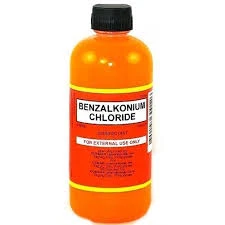coagulant flocculant
Coagulants and Flocculants Essential Agents in Water Treatment
Water treatment is a critical process for ensuring that water is safe and clean for human consumption and environmental health. Among the various techniques employed in this arena, the use of coagulants and flocculants stands out as essential components in the removal of contaminants. This article will explore what coagulants and flocculants are, their functions, and their significance in the water treatment process.
Understanding Coagulants
Coagulants are substances that promote coagulation, the process where small particles (colloids) clump together to form larger aggregates. These agents are typically added to water containing suspended particles, such as silt, clay, bacteria, and organic materials. Common coagulants include aluminum sulfate (alum), ferric chloride, and polyaluminum chloride.
The coagulation process begins with the destabilization of colloidal particles. Many of these particles carry a negative charge, causing them to repel each other and remain suspended. Coagulants work by neutralizing this charge, allowing the particles to come together. Once they aggregate, they form larger clumps, or flocs, that can be more easily removed from the water.
The Role of Flocculants
Flocculants, on the other hand, are additions that assist in the flocculation process, where the already formed aggregates of particles become larger and settle more quickly. Flocculants are typically high molecular-weight polymers that enhance the aggregation process. By bridging the gaps between small flocs, flocculants help form larger, heavier particles that can be removed more effectively from water.
Examples of common flocculants include polyacrylamide and various natural substances like starches and gums. The choice of flocculant depends on the characteristics of the water being treated and the specific contaminants present.
The Combined Effect of Coagulants and Flocculants
The treatment process generally begins with the addition of a coagulant, which is followed by the introduction of a flocculant. This sequential addition optimizes the removal efficiency of suspended solids from water. The coagulant destabilizes the particles, while the flocculant encourages the formation of larger, agglomerated particles that settle out of the water column.
coagulant flocculant

Together, coagulants and flocculants significantly reduce turbidity and enhance the clarification of water. They are commonly used in municipal water treatment facilities, as well as in industrial processes, wastewater treatment plants, and even in the food and beverage industry.
Environmental Considerations
While coagulants and flocculants play vital roles in water treatment, there are environmental and health considerations to keep in mind. For instance, the use of certain chemical coagulants can lead to residual contamination in treated water. The presence of aluminum, which is common in alum-based coagulants, has raised concerns about its potential links to health issues, prompting the exploration of alternative, less harmful coagulants.
Moreover, the disposal of sludge—byproducts formed during the coagulation and flocculation processes—poses challenges. Careful management of sludge is essential to minimize environmental impact. This can include methods for recycling coagulant and flocculant residues and utilizing treated sludge in safe and beneficial ways.
Innovations in Coagulation and Flocculation
Recent advancements in technology and biochemistry have led to the development of more effective and environmentally friendly coagulants and flocculants. Researchers are exploring natural and biodegradable options that achieve similar treatment efficiencies without the harmful side effects associated with traditional chemicals.
Furthermore, innovations in the application processes—like the use of automated systems to optimize the dosages and timing of coagulant and flocculant addition—are improving the efficiency of water treatment operations, leading to better-quality water with lower operational costs.
Conclusion
Coagulants and flocculants are indispensable in modern water treatment, enhancing the quality and safety of water supplies globally. As the demand for clean water continues to grow, the significance of these agents will only increase. Continued research and innovation in this field will facilitate the development of healthier, more sustainable practices to ensure that our water remains pure and safe for all living beings.
-
Water Treatment with Flocculant Water TreatmentNewsJun.12,2025
-
Polymaleic AnhydrideNewsJun.12,2025
-
Polyaspartic AcidNewsJun.12,2025
-
Enhance Industrial Processes with IsothiazolinonesNewsJun.12,2025
-
Enhance Industrial Processes with PBTCA SolutionsNewsJun.12,2025
-
Dodecyldimethylbenzylammonium Chloride SolutionsNewsJun.12,2025





